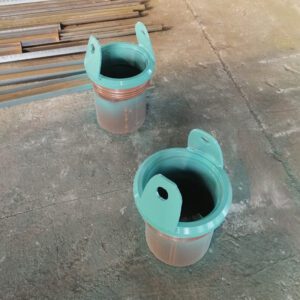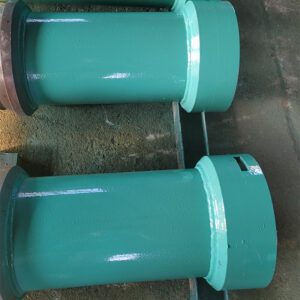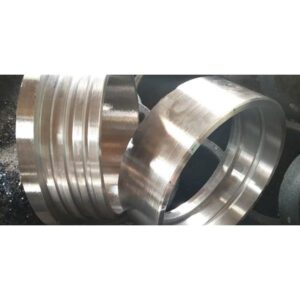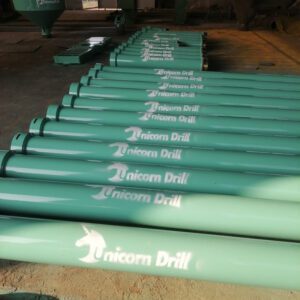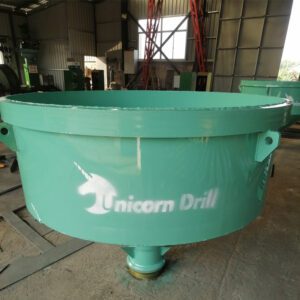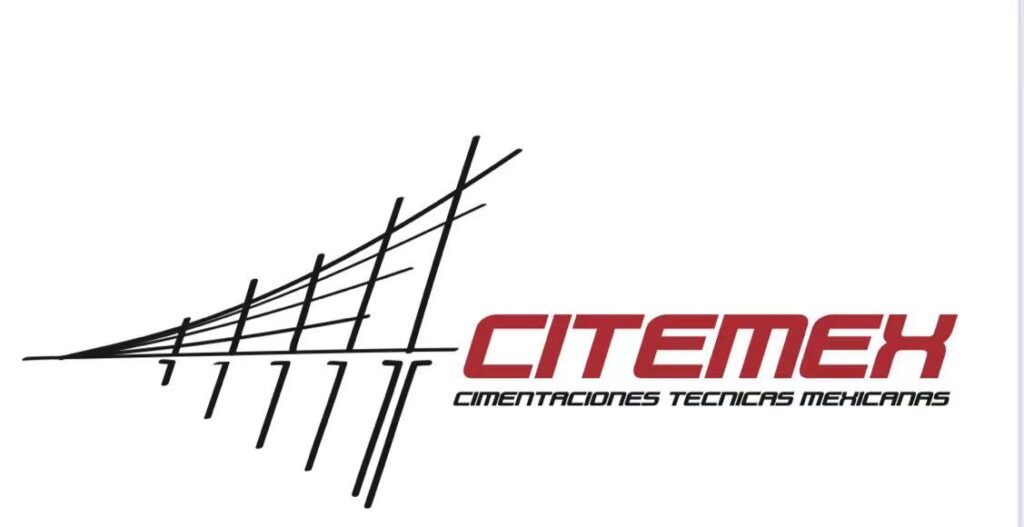The tremie concrete placement method uses a vertical or near vertical pipe, through which concrete is placed by gravity feed below water level.
The lower end of the pipe is kept immersed in fresh concrete so that concrete rising from the bottom displaces the water, thus limiting washing out of the cement content of the fresh concrete to the exposed upper surface. The upper end of the tremie pipe is kept above the water level during the pour and is provided with a conical hopper for batch loading, or concrete may be pumped into the top of the tremie pipe. Concrete must be poured at a rate which avoids setting in the tremie. Admixtures may be used to control setting time, slump and workability. Vibration and jerking of the pipe may be applied to encourage slumping and levelling of the upper surface of the pour, and the tremie may need to be raised occasionally during the pour so that the bottom end is not too deeply embedded, but the pipe must not be moved sufficiently to break clear of the mound and expose the bottom opening to the water, as this would allow washout of cement.
The lower end of the pipe is kept immersed in fresh concrete so that concrete rising from the bottom displaces the water, thus limiting washing out of the cement content of the fresh concrete to the exposed upper surface. The upper end of the tremie pipe is kept above the water level during the pour and is provided with a conical hopper for batch loading, or concrete may be pumped into the top of the tremie pipe. Concrete must be poured at a rate which avoids setting in the tremie. Admixtures may be used to control setting time, slump and workability. Vibration and jerking of the pipe may be applied to encourage slumping and levelling of the upper surface of the pour, and the tremie may need to be raised occasionally during the pour so that the bottom end is not too deeply embedded, but the pipe must not be moved sufficiently to break clear of the mound and expose the bottom opening to the water, as this would allow washout of cement.
Function
A tremie is used to pour concrete underwater in a way that avoids washout of cement from the mix due to turbulent water contact with the concrete while it is flowing. This produces a more reliable strength of the product.
A tremie is used to pour concrete underwater in a way that avoids washout of cement from the mix due to turbulent water contact with the concrete while it is flowing. This produces a more reliable strength of the product.
Equipment
A tremie is a watertight pipe, usually of about 250mm inside diameter (150 to 300 mm),[2] with a conical hopper at its upper end above the water level. It may have a loose plug or a valve at the bottom end. The tremie is often supported by a working platform above the water level. The pipe is made up of short sections commonly joined by srew thread with O-ring seal so that the length can be adjusted during the pour without getting the top of the pipe below the water or removing the bottom end from below the surface of the poured concrete. To facilitate management of pipe length is may be built up from 1 to 3.5m sections. A foam rubber ‘pig’ may be used to plug the pipe while introducing the first batch of concrete.
A tremie is a watertight pipe, usually of about 250mm inside diameter (150 to 300 mm),[2] with a conical hopper at its upper end above the water level. It may have a loose plug or a valve at the bottom end. The tremie is often supported by a working platform above the water level. The pipe is made up of short sections commonly joined by srew thread with O-ring seal so that the length can be adjusted during the pour without getting the top of the pipe below the water or removing the bottom end from below the surface of the poured concrete. To facilitate management of pipe length is may be built up from 1 to 3.5m sections. A foam rubber ‘pig’ may be used to plug the pipe while introducing the first batch of concrete.
Concrete
Concrete for tremie placement should have a very high slump of about 150 mm to 200 mm.
Concrete for tremie placement should have a very high slump of about 150 mm to 200 mm.
Applications
Concrete is often poured through a tremie pipe in order to build caissons, which are the foundations of, among other things, bridges that span bodies of water pilings.
Monitoring wells: Tremie methods are employed for materials other than concrete, and for industries other than construction. For example, bentonite slurries for monitoring wells are often emplaced via tremie pipe
Cateagory
Get A Quote
Contact Us
- +86-731-86800281
- +86-15273167776
- [email protected]
- No.49 Kaiyuan Road,Xingsha Economic Developing Zone, Changsha, Hunan Province, China
Leave A Message
Please fill in the following form correctly so that Unicorn can contact you.


